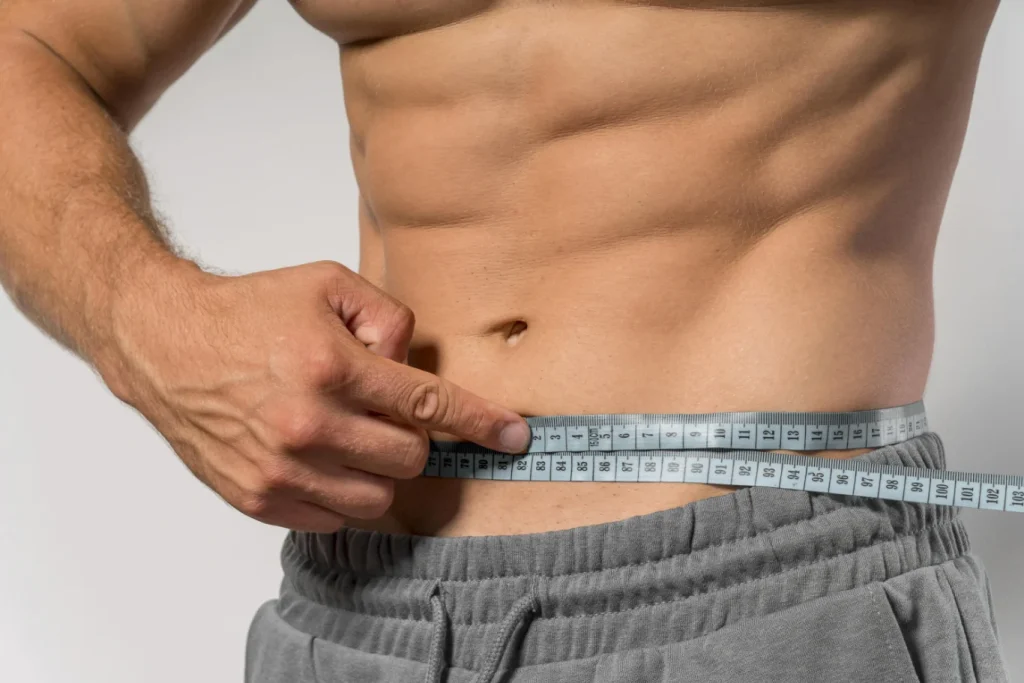If your goal is visible lines on the abdomen and a cleaner V shape at the flanks, you need two tracks, reduce body fat for global definition, and use nonsurgical contouring only for small, stubborn pockets. Trusted medical sources are clear that nonsurgical fat reduction is not a weight loss tool; it targets subcutaneous fat in specific zones, while overall definition still comes from lowering total body fat and managing visceral fat risk that is common in men. Start with the Body Contouring & Fat Reduction blog for context, then use this page to map your next steps.
Key takeaways
- Definition starts with fat loss; contouring fine-tunes small pockets
- Health first, visceral fat sits deeper and affects risk; it is not a device target
Choose tools by tissue: RF for laxity and texture, cavitation for small pockets, HIFEM for muscle tone support, with realistic expectations
Definition vs weight loss, get the order right
Visible abs and clean flanks come from a lower overall body fat percentage, not from devices alone. Nonsurgical fat reduction can trim a localized pocket on the lower abdomen or love handles when you are near your goal, but it does not substitute weight loss. Medical guidance frames these treatments as options for modest changes when surgery is not desired. Read our RF vs Cavitation blog for how we choose tools by tissue type.
Action bullets
- Set a fat loss phase first, with a steady deficit, progressive training, steps consistency
- Reserve devices for the final 10 to 20 percent of the aesthetic you want
- Think weeks to months, not days, for visible definition that lasts
Men store fat differently, why your lower abdomen and flanks are stubborn
Men often accumulate fat in the abdominal region, and a portion can be visceral fat around organs, which affects health risk and will not respond to external contouring devices. Subcutaneous fat, the pinchable layer, can be reshaped modestly with nonsurgical treatments once weight is stable. Your plan should measure, reduce risk, and then shape.
What to know
- Visceral fat drives risk and hides definition from the inside; treat with lifestyle
- Subcutaneous fat is the external layer devices can target
- Waist measurements and photos track both look and risk over time
Toolbox for men’s abdomen and flanks, what each can and cannot do
- Radiofrequency body tightening, improves skin quality and mild laxity, can contribute to small circumference change.
- Ultrasonic cavitation, targets localized subcutaneous fat, good for lower abdomen or flanks when skin tone is decent.
- HIFEM muscle toning, contracts muscles at high intensity, may increase abdominal muscle thickness and reduce a thin fat layer, use as an adjunct to training. See our RF vs Cavitation blog for selection logic.
Selection bullets
- If you see creasing or mild laxity, prioritize RF
- If you feel a firm pocket with good skin tone, cavitation fits better
- If training consistency is solid, consider HIFEM as a helper, not a replacement
Practical plan, abdomen and flanks
Start with a measurable 8 to 12 week fat loss block, then use a short device block where needed. Space treatments so you can see what moved the needle and keep hydration and walking consistent. Book through Slimming Treatment in Dubai when you want a mapped plan that blends both tracks.
Planner bullets
- Fat loss phase: diet and training first, photos every 4 weeks, tape at navel and iliac crest
- Device phase: 4 to 8 sessions RF for laxity or 4 to 8 sessions of cavitation for pockets, 1 to 2 week spacing
- Muscle support, HIFEM as adjunct only after training is established
- Review at week 8; continue only if objective change is present
What results look like, honest timelines
RF body, early firmness from session two, best at weeks 8 to 12.
Cavitation, gradual inch loss, clearer by weeks 4 to 8 if hydration and steps are on point.
HIFEM imaging studies show small muscle thickness gains and modest fat thickness changes in suitable candidates; real training still does the heavy lifting.
Expectation bullets
- Devices refine; they do not replace a deficit, sleep, and training
- Visible definition typically needs both fat loss and targeted shaping
- Stop or switch if mid-plan photos do not show objective improvement
Safety and candidacy for men
Good candidates are near a healthy weight, have stable habits, and seek modest shaping. We avoid energy treatments over implanted devices or active infections, and we are conservative with parameter choices over recent scars or hernia repairs. If you carry central obesity with suspected visceral fat, your plan starts with health first. See the blog for a wider view, Body Contouring & Fat Reduction.
Safety bullets
- No treatment during active illness, infections, or over implanted electronics
- Visceral fat is not a target for devices; address with lifestyle and medical guidance
- Informed consent and realistic goals are part of every plan
What we offer at Genomed
We build men’s programs that combine a fat loss track with targeted shaping. If you are a candidate, we run RF for quality, cavitation for small pockets, and HIFEM as a helper when training is already consistent. Explore, then book, Slimming Treatment in Dubai for an assessment and mapped plan:
Read the RF vs Cavitation blog to understand tool choice.
Program bullets
- Assessment with photos and tape, honest go or not now decision
- Short, testable blocks with mid plan review
- Clear at home habits so device time is not wasted
